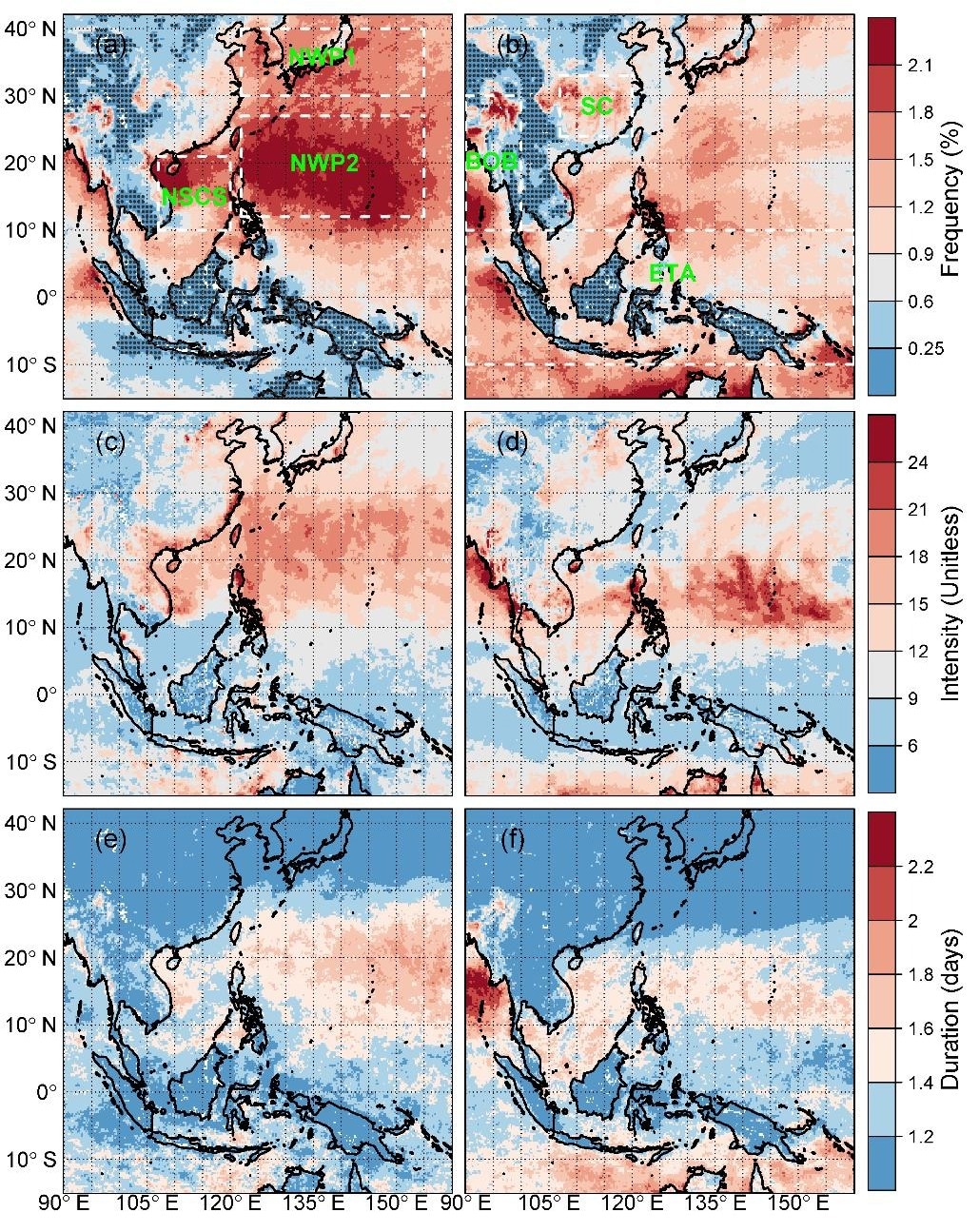Compound wind and precipitation extremes (CWPEs) are caused by co-occurrences of wind extremes and precipitation extremes and they could interrupt and threaten shipping and shipment logistics.
 The climatological mean (a, b) frequency (in percentage), (c, d) intensity (unitless quantity) and (e, f) duration (days) of CWPEs, in summer (left panels) and winter (right panels). Image Credit: Institute of Oceanology of the Chinese Academy of Sciences.
The climatological mean (a, b) frequency (in percentage), (c, d) intensity (unitless quantity) and (e, f) duration (days) of CWPEs, in summer (left panels) and winter (right panels). Image Credit: Institute of Oceanology of the Chinese Academy of Sciences.
The linked winds and floods might result in extreme socio-economic impacts in inland and coastal regions.
The Indo-Pacific region is often subject to atmospheric rivers, cyclones, and convective weather systems, and it suffers from the resulting hydro-meteorological threats. Hence, the area is a possible hotspot as well as a good showcase for comprehending mechanisms and drivers of compound events.
In recent times, a research group headed by Professor Baoshu Yin from the Institute of Oceanology of the Chinese Academy of Sciences (IOCAS) has disclosed the variability, climatology, and drivers of compound wind and precipitation extremes throughout the Indo-Pacific.
The study was reported in the Geophysical Research Letters journal on Jun 25th, 2022.
The research reported the regional and synoptic weather systems’ reliance on CWPEs. The northwestern Pacific Ocean and its adjacent sea areas observe the most intense, frequent, and longest-term CWPEs in summer.
This is primarily driven by cyclones, while atmospheric rivers are known to be one of the main drivers for CWPEs in central and western inland China and the northwestern Indo-China Peninsula.
The equatorial tropical areas consist of the smallest chance of seeing CWPEs, and such tropical events are principally regulated by some convective systems.
The long-term changes in the frequency of CWPEs show a spatially-mixed pattern.
Such a pattern for frequency changes is mainly determined by the spatially heterogeneous changes in the dependence structure between univariate wind and precipitation extremes across the region.
Dr. Delei Li, Study First Author, Institute of Oceanology Chinese Academy of Sciences
“We initiated new measures of compound wind and precipitation extreme in terms of its frequency, intensity, and duration. The study is the first try to quantify the contributions of different weather systems to the climatological mean and long-term of CWPEs,” stated Professor Yin.
The study was financially supported by the Strategic Priority Research Program of the Chinese Academy of Sciences, the National Key Research and Development Program of China, the National Natural Science Foundation of China, NSFC-Shandong Joint Fund, and the Youth Innovation Promotion Association, CAS.
Journal Reference:
Li, D., et al. (2022) Compound wind and precipitation extremes across the Indo-Pacific: Climatology, variability and drivers. Geophysical Research Letters. doi.org/10.1029/2022GL098594.